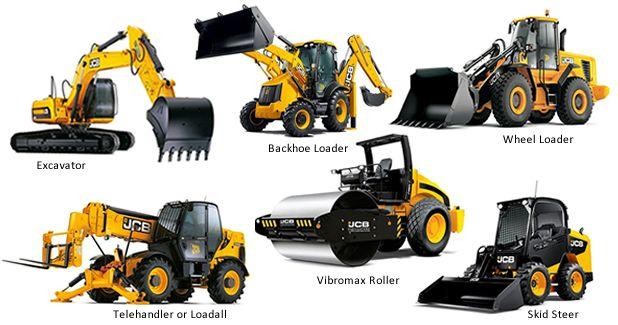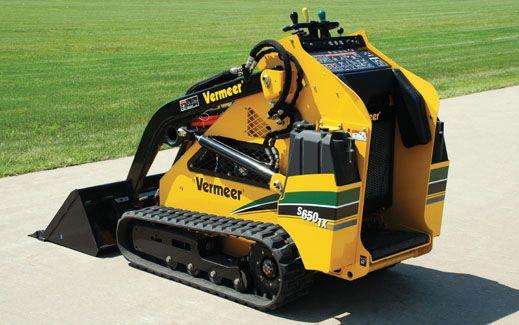Equipment Rental Company: Your Source for All Types of Machinery
Equipment Rental Company: Your Source for All Types of Machinery
Blog Article
Maximize Your Budget by Recognizing the Expenses Connected With Construction Tools Rentals
Recognizing the complete range of expenses linked with construction equipment leasings is essential for optimizing your budget plan. While the first rental charge might appear uncomplicated, countless extra expenditures-- such as transport, fuel surcharges, and upkeep-- can rapidly collect, influencing your monetary preparation. Being aware of various costs and the details of rental agreements can help stay clear of unexpected economic worries. What strategies can be utilized to successfully handle these expenses and make certain a much more effective rental experience?
Overview of Rental Prices
When considering building and construction equipment services, comprehending the linked costs is critical for reliable budgeting and task preparation. Rental prices can differ considerably based upon numerous elements, consisting of tools kind, period of service, and place. The first rental fee often reflects the devices's market demand and its associated functional abilities, influencing the general expenditure.
In addition to the base rental price, secondary prices might develop, such as transportation charges, gas surcharges, and upkeep costs. It is crucial to make up these additional expenses to accurately examine the total price of renting equipment. Moreover, the rental period can influence rates; longer rentals might qualify for discounted rates, while short-term services may incur greater daily costs.

Breakdown of Rental Rates
A comprehensive understanding of rental rates is vital for specialists and project managers intending to enhance their budget plans. Rental rates for building and construction tools commonly contain numerous elements, including base rates, time-based costs, and use costs.
Base rates are the core costs associated with the service of the devices, typically identified by the kind and dimension of the equipment. These prices can vary considerably, influenced by elements such as devices need, accessibility, and regional market trends. Time-based fees, which might be daily, weekly, or monthly, offer to fit various task timelines and rental periods.
Additionally, rental rates might consist of usage fees, which apply when devices is used beyond a specified threshold, making certain that the rental firm can account for deterioration. Seasonal need variations can also influence rental rates, with peak construction periods typically regulating higher prices.
Furthermore, recognizing the rental business's policies pertaining to upkeep and insurance can offer more understanding right into the overall expense structure. By assessing these components, contractors can make educated choices, making certain the option of rental tools lines up with both job demands and budget restraints.
Additional Costs to Consider
Understanding the complexities of added costs is important for service providers to handle their overall rental costs effectively. Beyond the standard rental rates, different extra charges can considerably impact the overall expense of equipment leasing. These fees typically consist of delivery and pick-up charges, which can vary based on range and logistics entailed in delivering the equipment to and from the job website.
Additionally, some rental business may impose gas surcharges if Find Out More the equipment is returned with less fuel than when rented out. It is additionally necessary to know potential cleansing charges, particularly for specific equipment that requires comprehensive maintenance after use.

Thoroughly assessing the rental contract and clearing up these added costs upfront can aid specialists avoid unanticipated costs and make certain that spending plans remain undamaged throughout the task lifecycle.
Upkeep and Repair Expenses
Normal upkeep and repair work expenses are usually overlooked variables that can significantly influence the general cost of building and construction equipment leasings. When renting tools, it is important to take into consideration not just the rental charges yet additionally the possible expenses associated with maintaining the equipment in optimal operating condition.
Lots of rental firms include fundamental upkeep as part of the rental arrangement; nevertheless, extra unforeseen malfunctions or considerable fixings can bring about extra expenditures. It's necessary to evaluate the rental contract carefully to comprehend what upkeep services are covered and what responsibilities fall on the renter.
Furthermore, equipment that is not properly maintained can lead to inefficiencies at work site, possibly triggering delays and raising task prices. To minimize these threats, it is recommended to conduct regular evaluations and keep open interaction with the rental supplier regarding any type of issues that occur during usage.
Insurance Coverage and Liability Prices
Insurance and obligation costs are anonymous critical components that can significantly affect the overall expense of building and construction equipment leasings (scissor lift rental). These expenses make sure that both the rental firm and the customer are secured from prospective monetary losses emerging from crashes, damages, or burglary throughout the rental duration

Additionally, customers ought to be conscious of any deductibles or exemptions in the insurance policy, as these can impact potential out-of-pocket expenses. Understanding the terms of any insurance protection is essential to prevent unexpected prices. Inevitably, budgeting for insurance coverage and liability costs can assist ensure a smoother rental experience and safeguard versus economic dangers related to building and construction jobs.
Verdict
In final thought, an extensive understanding of the prices connected with building tools services is necessary for reliable spending plan monitoring. By analyzing rental prices, added fees, maintenance expenses, and insurance coverage individuals, needs and organizations can lessen unforeseen expenditures. This calculated technique not just boosts cost-effectiveness however additionally makes certain that projects progress smoothly and efficiently. Inevitably, notified decision-making pertaining to devices leasings contributes to the general success of building and construction ventures.
Rental costs can differ dramatically based on a number of elements, including tools kind, duration of leasing, and location (aerial lift rental). The rental duration can affect pricing; longer services might certify for discounted rates, while short-term rentals may incur greater daily costs
By conducting thorough study and engaging with reliable rental firms, contractors can efficiently browse the intricacies of rental prices, eventually maximizing their financial resources.
Beyond the typical rental rates, various auxiliary fees can substantially influence the overall cost of devices rental. Rental business commonly provide liability insurance coverage that covers injuries to third parties or damage to residential or commercial property, while equipment damage visit their website insurance can cover the cost of repairs or replacement if the rented tools is damaged.
Report this page